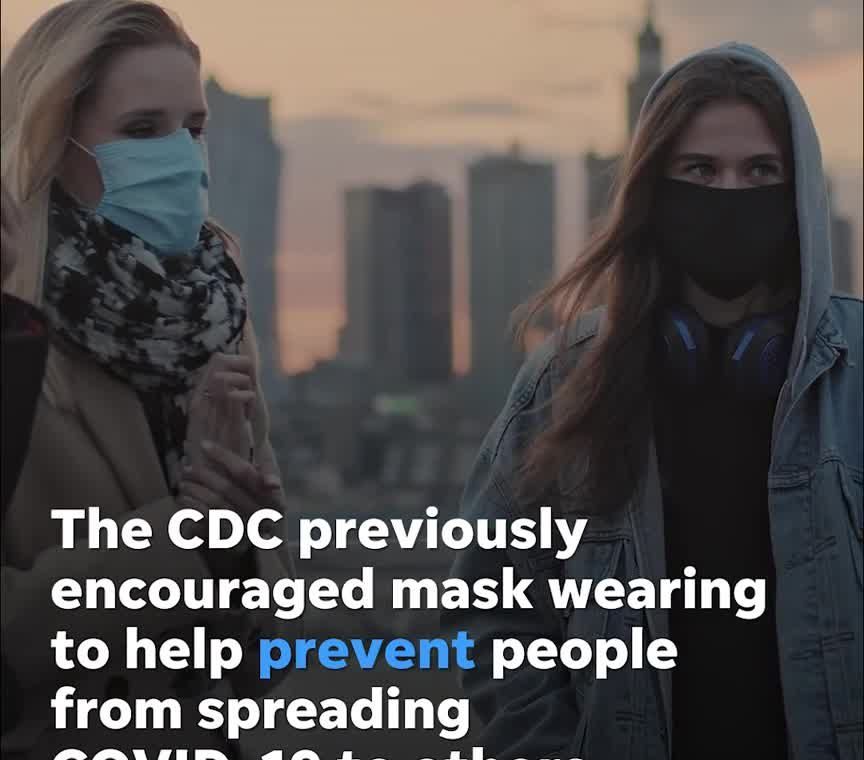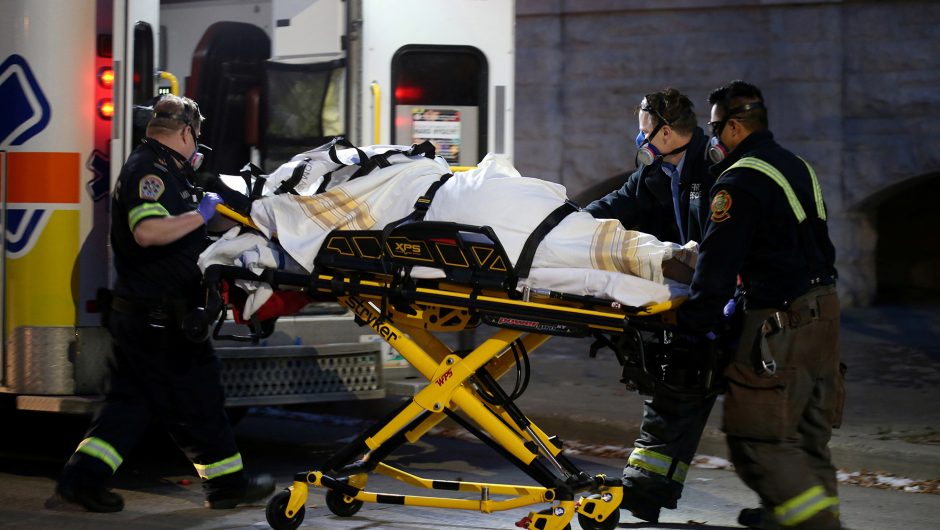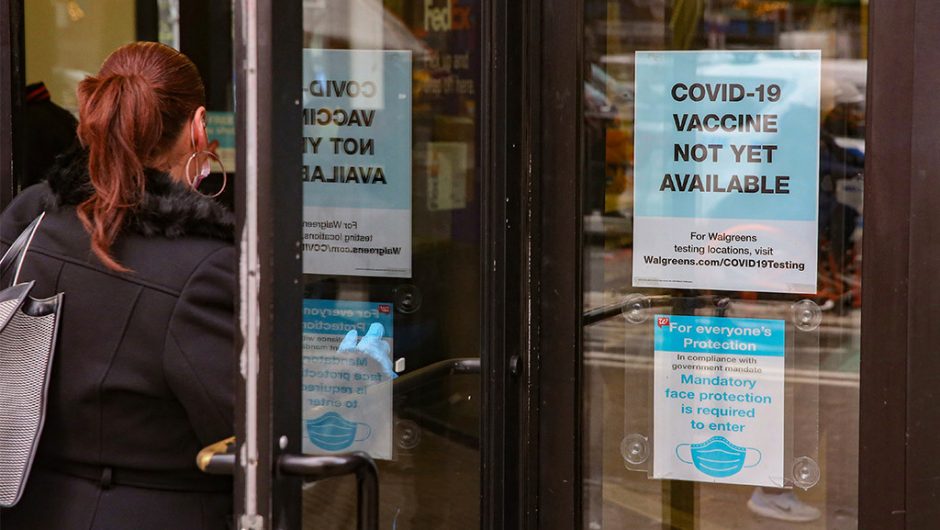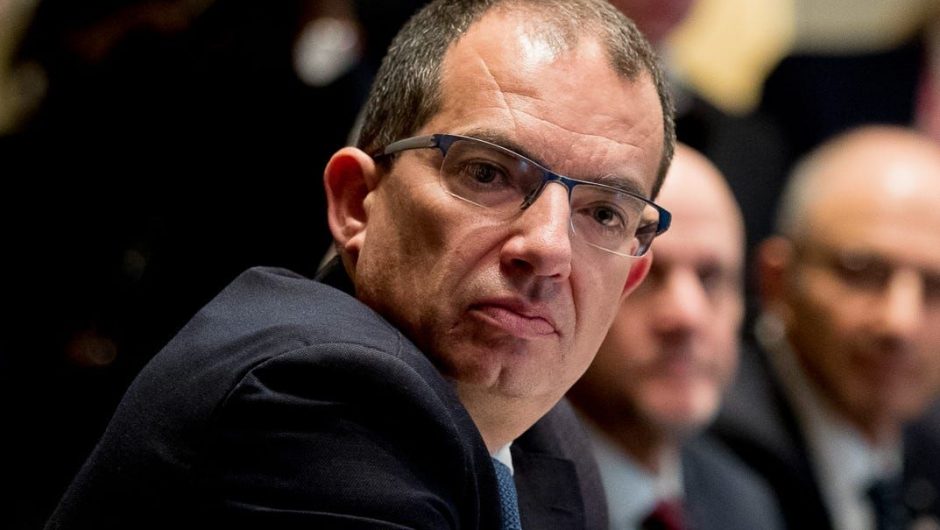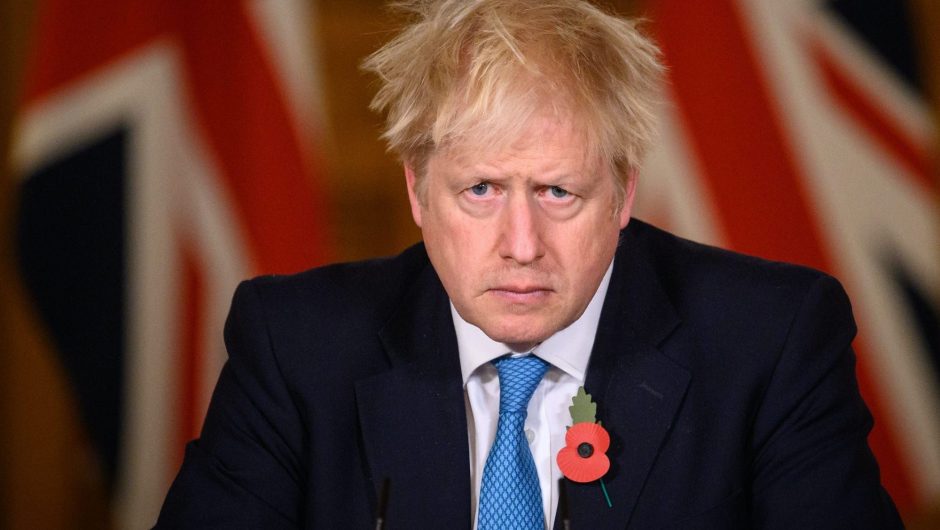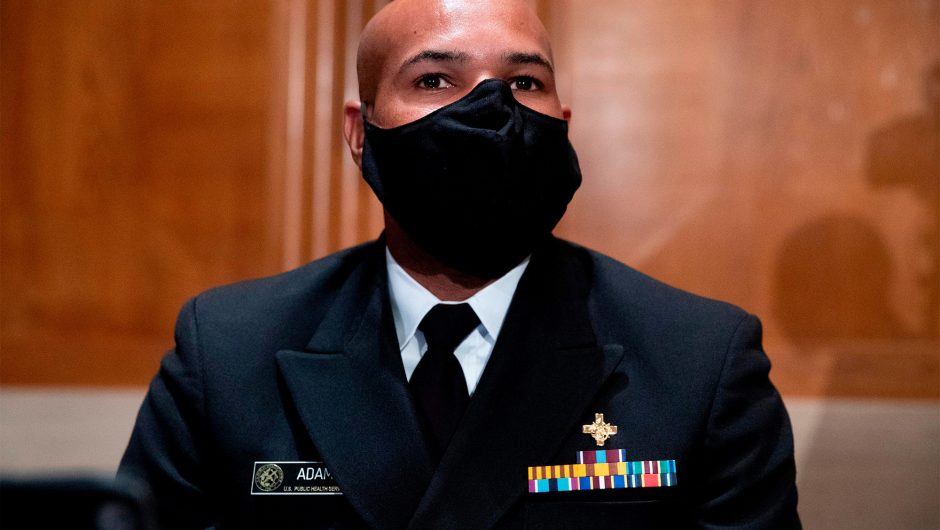As COVID-19 cases, hospitalizations and deaths continue to rise nationwide, some states are halting phased reopening plans or imposing new coronavirus-related restrictions.
Several are putting limits on social gatherings, adding states to travel quarantine lists, mandating face masks and encouraging residents to stay home, as many did in the spring. Others are restricting business hours of operation and limiting restaurant capacity.
Thirty-five states – plus the District of Columbia and Puerto Rico – now require people to wear face coverings in public statewide, according to a list maintained by AARP. Utah and North Dakota joined the list in recent days, and Maine, Ohio and West Virginia strengthened their mandates this week.
And on Friday, the governors of New Mexico, Oregon, Vermont, Virginia and West Virginia announced additional coronavirus restrictions.
Is your state reimplementing COVID-19 restrictions? See the list below.
First, check out this map: States that are reopening or reimplementing restrictions
Get daily coronavirus updates in your inbox: Sign up for our newsletter now.
Alabama
Republican Gov. Kay Ivey on Nov. 5 extended the state’s face mask order until Dec. 11 at 5 p.m.
“I’m willing to keep the mask order in place while acknowledging that sooner rather than later it will be up to each of us to do the right thing, regardless of a government mandate or not,” Ivey said.
The governor also announced two changes to occupancy rates and business social distancing rules beginning Nov. 8.
Read more: Alabama mask order extended to December amid COVID-19 spread
Alaska
Republican Gov. Mike Dunleavy issued a statewide emergency alert Nov. 12 and implored Alaskans to take steps to slow the spread for the next three weeks, according to the Anchorage Daily News.
Alaska does not have a statewide mask order.
Arizona
Republican Gov. Doug Ducey posted a Twitter video Nov. 10 to urge mask-wearing, physical distancing, handwashing and staying home when sick. “I can’t stress this enough. These are simple steps, and as we’ve seen, they can make a real difference,” he said.
Story continues
Ducey, in an Oct. 29 COVID-19 briefing, said Arizonans “need to keep our guard up” but announced no new preventive measures, instead pointing to existing strategies such as restaurant capacity limits. Arizona does not have a statewide mask order, but face coverings are required in some circumstances.
Closer look: Here are 5 reasons why COVID-19 is surging again in Arizona
Arkansas
Arkansas’ COVID-19 hospitalizations again hit a new high this week, but Gov. Asa Hutchinson has not imposed any new restrictions on businesses or gatherings. The Republican governor said many of the state’s cases are coming from smaller gatherings at homes and that they can’t be regulated.
Arkansas has had a statewide mask order since July.
Read more: Arkansas virus hospitalizations hit new high as cases surge
California
The state last week moved 11 counties back a notch on its four-tier reopening plan. Three of them – San Diego, Sacramento and Stanislaus – moved to the lowest level, which will require no indoor dining at restaurants or indoor church services. San Francisco, even though it has one of the lowest infection rates among the state’s cities, also moved to stop indoor dining at restaurants.
California has had a statewide mask order since June.
California rolls back reopening plansafter nearly 1 million cases, 4.2% coronavirus positivity rate
Colorado
Colorado extended its face mask order Nov. 9 for 30 days. Democratic Gov. Jared Polis urged Coloradans to buckle down in the coming few weeks by avoiding social interactions outside of their households, washing their hands and wearing a mask.
“As hospitalizations increase, everyone needs to do better by socializing only with those who you live with, wearing a mask and staying 6 feet apart, so we can get our numbers under control,” Polis said in a statement.
Polis extends mask mandate: Governor urges Coloradans to ‘buckle down’
Connecticut
Democratic Gov. Ned Lamont rolled back Connecticut’s reopening plans last week, meaning a 10 p.m. closing time for restaurants, entertainment venues like movie theaters or bowling alleys, and indoor and outdoor events. At restaurants, last service for in-person dining is 9:30 p.m., though they can stay open for takeout and delivery. Diners that operate 24 hours normally can reopen for indoor dining at 5 a.m.
Connecticut has had a statewide mask mandate since April.
COVID-19 threatens people living in shelters. How an agency rushed to save them.
Delaware
The state’s Department of Correction is suspending in-person visitation to its prisons and work release and violation of probation facilities as COVID-19 cases spike across Delaware.
When asked about the possibility of new restrictions, Jonathan Starkey, a spokesperson for Gov. John Carney, said the Democratic governor will consider implementing new restrictions “if that becomes necessary to reduce the spread, based on advice from the public health experts.” Carney has said previously a shutdown similar to the one earlier this year is not feasible and Delawareans have to “adapt to a new normal.”
Delaware has had a face mask order since April.
Amid nationwide surge, Delaware reports average of 226 COVID-19 cases per day
Florida
Florida has not implemented any new restrictions. On Oct. 22, Republican Gov. Ron DeSantis loosened restrictions on visits to nursing homes, saying higher risk of infection is outweighed by positive mental health benefits of increased social interaction.
Florida does not have a statewide mask mandate.
In Florida: As governor eases restrictions at nursing facilities, many ask: Is this safe?
Georgia
Republican Gov. Brian Kemp tweeted last week that “it is now more important than ever for all Georgians to double down on prevention measures to stop the spread of COVID-19.”
In a video message, Dr. Kathleen Toomey, commissioner of the state Department of Public Health, urged everyone to wear masks, social distance and get a flu shot.
Georgia does not have a statewide mask mandate.
More on this: Georgia secretary of state isolates after wife tests positive for COVID-19
Hawaii
Last month, Hawaii started allowing all travelers to use proof of a negative COVID-19 test in lieu of having to quarantine. This week, the Department of Health said new cases had dropped to 64 on Nov. 9.
Hawaii has a statewide mask mandate.
Read more: Hawaii to let travelers who test negative to bypass quarantine
Idaho
Republican Gov. Brad Little signed a statewide public health order Oct. 26 moving Idaho back into a modified Stage 3, which limited indoor gatherings to 50 and outdoor gatherings to 25% of capacity, and it requires wearing of masks in long-term care facilities.
Idaho does not have a statewide mask order.
More: Chinese couple can’t take custody of baby born to Idaho surrogate over travel restrictions
Illinois
The Illinois Department of Public Health on Nov. 11 began encouraging residents to take extra precautions for the next three weeks amid a surge in COVID-19 cases in the state. Those suggestions include: work from home, participate in essential activities only and limit travel and gatherings.
“For the next three weeks, stay home as much as possible, leaving only for necessary and essential activities, such as work that must be performed outside the home, COVID-19 testing, visiting the pharmacy, and buying groceries,” the department said in a news release Nov. 11. “Our goal is to reduce transmission as we head into the holidays so businesses and schools can remain open.”
Illinois has had a statewide mask order since April.
More: When this Santa in Indiana got coronavirus, parents held their breath — for 115 days
Indiana
Republican Gov. Eric Holcomb on Nov. 11 moved the state out of its Stage 5 of reopening after seven weeks of coronavirus cases and hospitalizations soaring beyond the spring rates.
Holcomb placed limits on social gatherings and school events for most of the state, and he also made available $20 million to local officials to help ensure businesses adhere to the state’s mask and social distancing requirements.
“Unfortunately, too many of us and around the country have let our guards down,” Holcomb said. “Stage 5 was being lost on people or it was being misinterpreted. … Stage 5 to many was translated to or received as, ‘We’re past it, we’re at the final stage, there’s nothing more we need to do.'”
Indiana has had a statewide mask order since July.
Read more: Holcomb announces new approach to restrictions to curb coronavirus surge
Iowa
Republican Gov. Kim Reynolds announced Nov. 10 that she would require masks at many public gatherings as new coronavirus cases and hospitalizations continue to set records.
“You can still eat in a restaurant. You can still go to a movie and work out at the gym —and in many states you can’t do that,” Reynolds said at a news conference. “Iowa is open for business, and we intend to keep it that way. That’s why it’s time for these additional mitigation measures, but it will take all of us doing everything we can to stop the spread of the virus and keep it at a manageable level that we can live with.”
More on this: Iowans must wear masks at large gatherings
Kansas
Democratic Gov. Laura Kelly said Nov. 10 she was not yet considering any sort of statewide mitigation efforts, instead choosing to work with local governments and Republican legislators.
Topeka Unified School District 501 will return to remote learning due to a surge in COVID-19 cases, district officials announced. The remote-learning order will stay in place at least through the Thanksgiving weekend, officials announced.
Kansas has had a statewide mask order since July.
Read more: Kansas reports over 5,000 new COVID-19 cases
Kentucky
Kentucky has had a statewide mask mandate since July and, in early November, Democratic Gov. Andy Beshear extended the order through Dec. 4.
The state Supreme Court on Nov. 12 upheld Beshear’s authority to issue executive orders in an emergency following a challenge to those he has issued since the COVID-19 pandemic hit Kentucky.
Kentucky Supreme Court: Governor’s power to issue emergency COVID-19 orders upheld
Louisiana
Democratic Gov. John Bel Edwards celebrated a court decision this week that defeated a petition brought by some lawmakers that challenged his order requiring a mask mandate as part of Stage 3. “This represents our best chance at slowing the spread of COVID in Louisiana,” Edwards said in a statement.
Edwards said Nov. 12 that Louisiana would stay in Phase 3 and keep its current COVID-19 mitigation measures in place for another 28 days.
More on this: Gov. Edwards Extends Phase 3 until December 4
Maine
Democratic Gov. Janet Mills issued an executive order Nov. 5 requiring people to wear a face covering regardless of whether they can physically distance from others as. The new order strengthened a previously issued mask mandate that required face masks only if physically distancing was difficult to maintain.
“We have recorded yet another day of record high case numbers. This deadly and dangerous virus is spreading all across our state,” Mills said. “Protect your family. Protect a health care worker. Protect the elderly. Wear your face covering. Save lives. It is that simple.”
COVID-19 spread in Maine: Wedding linked to 143 cases, one death, outbreak at jail
Maryland
Republican Gov. Larry Hogan re-imposed restrictions to combat a “public health catastrophe” due to a surge in COVID-19 cases. Staring Nov. 11, indoor dining at restaurants and bars must return to 50% capacity. State health officials are “strongly advising against” indoor gatherings of more than 25 people and nonessential travel to states with a positivity rate above 10%. Those who leave the state must get tested and self-quarantine.
“More people are getting infected with the virus, more people are being hospitalized, more people are going into intensive care, and more Marylanders are dying,” Hogan said. “The actions we are taking today are absolutely necessary to help us withstand this surge, to save lives.”
Read more: Baltimore hotel offers free lodging for people with COVID-19 who can’t quarantine at home
Massachusetts
Republican Gov. Charlie Baker instituted a partial stay-at-home order effective Nov. 6. The revised order seeks to restrict late-night congregating, telling residents to stay home from 10 p.m. to 5 a.m. ET. But it allows trips to work, running “critical errands,” such as going for groceries or for health reasons, and allows people to take walks.
Restaurants, liquor stores, gyms, hair salons, theaters and some other recreational businesses and attractions must close from 9:30 p.m. to 5 a.m. as well. Restaurants, however, may be allowed to stay later for takeout food. Private gatherings at people’s homes, limited to 10 people inside and 25 outdoors, must end by 9:30 p.m.
Massachusetts is also planning to open a field hospital in Worcester to prepare for a possible overflow of COVID-19 patients as the disease continues to surge again in the state.
All residents also must wear face masks even when they can maintain 6 feet of distance from others under the order. The state has had a mask mandate since May.
Read more: Massachusetts is calling for a curfew to curb rising COVID-19 infections
Michigan
Democratic Gov. Gretchen Whitmer said Nov. 15 that in-person classes at high schools and colleges statewide will be suspended for three weeks as part of several new restrictions aimed at stemming a spike in coronavirus cases that has resulted in the state’s largest number of infections over a seven-day period since the pandemic began.
The measures take effect Nov. 18 and include a ban on eat-in dining at restaurants and bars for those three weeks, as well as the cancellation of organized sports and group exercise classes that don’t involve college or pro athletics. Casinos and movie theaters will be closed temporarily and gatherings inside homes will be limited to two households.
Read more: Whitmer extends mitigation measures as coronavirus cases spiral.
Minnesota
Democratic Gov. Tim Walz imposed new COVID-19 restrictions Nov. 10 amid a surge in statewide infections, reducing the allowed capacity at bars and restaurants and setting limits on social gatherings. Conditions will get dramatically worse unless people start changing their behavior, he said.
Bars and restaurants must stop serving at 10 p.m., but they can still offer takeout and delivery, and attendance at weddings, funerals and social gatherings will be limited.
Minnesota has had a statewide mask order since July.
Read more: Minnesota reports record 56 new deaths linked to COVID-19, including 8 in tri-county area
Mississippi
Republican Gov. Tate Reeves announced Nov. 11 he is extending his mask mandate into December, affecting residents in 15 counties across the state. The order will now remain in effect until Dec. 11.
Reeves said in a news release that he knows everyone in the state is growing increasingly more frustrated by the orders, but he reiterated their importance.
“I know that we are all tired and ready to move on, but the virus is still here,” he said. “We’ve gotten far better at dealing with it and allowing for life to go on, but we’re not all the way there yet. Keep fighting and protecting the most vulnerable in your life.”
Businesses can remain open provided they operate in a limited capacity and adhere to guidelines issued by the Mississippi Department of Health and the Centers for Disease Control and Prevention, he said.
Read more: Reeves extends Safe Recovery order for 15 counties
Missouri
Republican Gov. Mike Parson said Nov. 12 that individuals who properly wear masks in the school setting may not have to quarantine if they are in close contact with someone who tests positive for COVID-19. This is a major change aimed at keeping exposed, but otherwise healthy, students and teachers in the classrooms.
“We know that COVID-19 is not going away soon, so it is important that we continue to evaluate the guidance we’re issuing at the state level to make sure our procedures are sustainable for the next several months,” he said.
The state does not have a mask mandate, and Parson reiterated on Nov. 12 that he does not support one.
Read more: Missouri relaxes mandatory quarantine rules for masked students, teachers
Montana
Republican Gov.-elect Greg Gianforte on Nov. 10 announced a 21-member COVID-19 Task Force, which he said would be “indispensable” in helping him create a plan for the Treasure State to deal with the pandemic.
State officials said Nov. 12 that 1 in every 24 Montanans has been diagnosed with COVID-19 since it surfaced in on March 11.
Montana has had a statewide mask mandate since July.
Read more: Mask enforcement in Montana evolved as COVID-19 cases increased
Nebraska
Republican Gov. Pete Ricketts announced new health measures Nov. 11. The measures require people to maintain 6 feet of separation “in all instances” in various public spaces, requires masks for staff and patrons at indoor businesses and limits fan attendance for all indoor youth extracurricular activities to household members of participants only.
Nebraska does not have a statewide mask mandate.
Read more: Ricketts announces new statewide measures against COVID-19
Nevada
Democratic Gov. Steve Sisolak issued Nevadans an ultimatum on Nov. 10: Shape up in two weeks, or expect steps toward another shutdown.
Sisolak told reporters the state “must see a significant reversal of the current trends” in order to keep the state’s economy up and running. He also asked local governments to step up enforcement of the state’s existing COVID-containment measures and urged employers to allow telework whenever possible — all in order to “mimic” much stricter shelter-in-place orders issued at the start of the pandemic.
The first-term Democrat has practically begged residents to follow Nevada’s mask-wearing and social distancing orders during recent virus-related press events.
Read more: Sisolak warns of tougher restrictions if COVID-19 numbers don’t improve
New Hampshire
New Hampshire does not have a statewide mask mandate, but face masks are required at “scheduled gatherings of 100 or more people,” unless attendees are seated and spaced 6 feet apart. Masks are also required at some indoor businesses.
New Jersey
Towns and counties will have the discretion to close bars, restaurants and other businesses by 8 p.m. under an executive order Democratic Gov. Phil Murphy said he planned to sign Nov. 12.
The order will allow local officials to close any business not considered essential two hours earlier than a statewide order issued this week that stops bars and restaurants from operating indoors after 10 p.m.
“Our approach to this second wave is to act surgically to hot spot areas,” Murphy said at a briefing. “That means giving local officials the ability to take action to prevent localized hot spots from becoming COVID wildfires.”
New Jersey has had a statewide mask order since July.
Read more: NJ towns, counties allowed to close nonessential businesses early
New Mexico
Gov. Michelle Lujan Grisham on Nov. 13 announced a two-week “reset” of heightened public health restrictions from late March and early April. That means citizens are ordered to shelter in place, leaving home only for essential trips for health, safety and welfare. All non-essential businesses and nonprofits will cease in-person activities per the order. Essential businesses may operate under reduced operations and occupancy to the “greatest possible extent.”
This encompasses the Thanksgiving Day holiday, running through Nov. 30.
New Mexico has had a statewide mask order since May.
New Mexico: State raises ceiling on daily COVID-19 cases, reporting 1,500 Wednesday
New York
Bars and restaurants with a liquor license will have to close by 10 p.m. and indoor gatherings at private homes will be limited to no more than 10 people under new statewide rules announced Nov. 11 by Gov. Andrew Cuomo. Gyms will also have to close by 10 p.m.
The restrictions, which take effect Friday night, come in response to increasing COVID-19 numbers in the state and growing concerns that it will be hit with a second wave of coronavirus cases, hospitalizations and deaths.
The limit on social activities at home, down from the current 50, is sure to draw some backlash, but Cuomo, a Democrat, said on Twitter, “We know indoor gatherings and parties are a major source of COVID spread.”
New York has had a statewide mask order since April.
Read more: New York bars, restaurants must close at 10 p.m. each night
North Carolina
Democratic Gov. Roy Cooper on Nov. 10 announced the state will remain paused in Phase 3 of its reopening plan, which includes a statewide mask mandate, for at least three more weeks. He also announced the limit on indoor gatherings will be lowered from 25 to 10 people.
“We’ve come too far to lose our focus now,” he said, eight months after COVID-19 first shutdown much of the state.
The Phase 3 order on reopening businesses and public spaces had been scheduled to expire Friday. Cooper enacted Phase 3 in early October after relaxing past reopening restrictions.
Read more: NC will remain in Phase 3, indoor gathering limit lowered to 10
North Dakota
Republican Gov. Doug Burgum on Nov. 13 mandated the wearing of masks in businesses and indoor spaces in their states, following increased pressure from doctors, nurses and other health care professionals.
The directive goes into effect Nov. 14 and will last until Dec. 13. Burgum said in a statement that doctors and nurses “need our help, and they need it now.” Burgum also directed all bars and restaurants to limit capacity to 50%, and closed all in-person service between 10 p.m. and 4 a.m. Large-scale venues are limited to 25% capacity.
Meanwhile, Burgum recently supported a move to allow health care workers who have tested positive for the coronavirus but don’t have symptoms to remain on the job, in an effort to ease stress both on hospitals and medical personnel. Burgum says hospital administrators asked for the action and interim State Health Officer Dirk Wilke amended an order to allow it to take effect.
More: The Dakotas are ‘as bad as it gets anywhere in the world’ for COVID-19
Ohio
Republican Gov. Mike DeWine on Nov. 11 threatened to close restaurants, bars and fitness centers, impose a revised mask order that could briefly close businesses for violations, and crack down on post-event gatherings.
The governor said during a statewide address from the Statehouse that bars, restaurants and fitness centers could be ordered closed a week from Thursday “if the current trend continues and cases keep increasing.”
Read more: DeWine says restaurants, bars could close; businesses must enforce mask wearing
Oklahoma
Republican Gov. Kevin Stitt has not implemented a statewide mask mandate or any other significant measure to mitigate spread of the virus, while continuing to ask Oklahomans to follow recommended hygiene and distancing protocols.
Stitt, who was the first governor in the nation to test positive for the coronavirus in July, is frequently seen in public without a mask.
Read more: Oklahoma officials place responsibility on state residents after huge surge in COVID cases
Oregon
Gov. Kate Brown announced Nov. 13 a two-week “freeze” for the state that will take effect starting Nov. 18. Restaurants and bars will have to go back to take-out service only — previously they were allowed to have limited indoor seating — and indoor recreation centers like gyms, museums and theaters will close again, as will zoos and gardens. Grocery stores will be limited to 75% capacity, and Brown is encouraging curbside pickup when possible.
Additionally, the freeze will stop visits to nursing homes and business are now required to mandate that employees work from home as much as possible. Social gatherings, in or out, are not to include more than six people from two households.
Oregon has had a statewide mask order since July.
More here: Oregon reports 876 new cases, five new deaths
Pennsylvania
State leaders across the board have said they hope to avoid draconian measures such as the statewide lockdown Democratic Gov. Tom Wolf ordered in the spring. But as the number of positive cases continues to rise, so does the positive test rate in counties across the state and their transmission levels.
“We are now seeing the highest case counts of COVID-19 across Pennsylvania that we’ve seen since the beginning of the pandemic in March,” said Health Secretary Rachel Levine. “This is a sobering look at our current reality as COVID-19 continues to impact our state and our country.”
Pennsylvania has a statewide face mask mandate, and the state has a 25% indoor occupancy limit for restaurants.
In Pennsylvania: Restaurants prep for cold weather and bet against another shutdown
Rhode Island
Democratic Gov. Gina Raimondo warned Nov. 12 that Rhode Island is “moving toward another lockdown,” which she has attributed to people not following her calls to cancel social gatherings, particularly indoors without masks.
She said at her news conference that she was “pleading” with Rhode Islanders, one last time, to change their behavior.
Read more: Raimondo says Rhode Island ‘moving toward another lockdown’
South Carolina
Republican Gov. Henry McMaster’s office said Nov. 7 it has no plans to enact any new statewide restrictions. COVID-19 counts are reaching levels not seen since early August in the Upstate and state health officials warned that South Carolina could be in the midst of a “fall surge.”
South Carolina does not have a statewide mask mandate.
Read more: South Carolina governor plans no new statewide restrictions
South Dakota
Republican Gov. Kristi Noem has repeatedly said she won’t issue a statewide mask requirement and has voiced doubts about health experts who say face coverings prevent infections from spreading.
Read more: South Dakota hits new record high in COVID-19 cases
Tennessee
Tennessee does not have a statewide mask mandate, but some local officials voted on Nov. 10 to support pushing Republican Gov. Bill Lee to implement a mandate.
Read more: Germantown board votes to encourage Lee to issue statewide mask mandate
Texas
Texas, the first state to top 1 million cases of COVID-19, has had a face mask order since July.
In mid-September, Republican Gov. Greg Abbott relaxed capacity limits for businesses in much of the state, including restaurants, retail stores and gyms, citing declining hospitalizations. Hospitalizations have risen by more than 90% since then.
Businesses can accommodate 75% of capacity, up from the previous 50% limit, as long as the area’s COVID-19 patients occupy 15% or fewer of available hospital beds.
Abbott later said that bars could reopen at 50% capacity starting Oct. 14 with the approval of local officials, again as long as COVID-19 patients take up no more than 15% of available beds in the hospital service area.
Read more: Texas cases exceed 1 million
Utah
Republican Gov. Gary Herbert declared a state of emergency and issued a statewide mask mandate Nov. 8, hoping to stem a troubling spike in coronavirus cases and hospitalizations.
After weeks of surging coronavirus cases and deaths, Herbert introduced a new tiered “Transmission Index” that will be used to place each county into one of three levels of alert — high, moderate and low.
Based on the index, which calculates each county’s level of transmission using metrics like cases per-capita, transmission rates and hospital capacity, each county will need to follow new requirements regarding masks, social distancing, and rules for going out in public.
Local government officials and hospital leaders who had been calling on Herbert to impose a statewide mask order lauded his decision, but some sheriffs have said they refuse to enforce it.
Read more: Herbert issues statewide mask mandate, other COVID-19 orders
Vermont
Republican Gov. Phil Scott announced Nov. 10 that all travelers going in or out of Vermont for nonessential reasons are required to quarantine. The state has also revised its guidance for recreational sports and college athletics, and it has issued some of the most stringent restrictions to ski resorts.
On Nov. 13, Scott announced new restrictions on social gatherings, with early closing for bars and a ban on multiple household gatherings. The restrictions take effect at 10 p.m. on Nov. 14, when bars and social clubs will be closed to in-person service but may offer take-out. Restaurants must close to in-person service by 10 p.m. each night. The state is requiring restaurants, gyms, museums, and other establishments to keep a daily log of visitors.
In Burlington, the city council unanimously voted Monday to extend its gathering size limits until the first week of March.
Vermont has had a statewide mask mandate since August.
Read more: Vermont sets record for COVID-19 cases in a single day
Virginia
Democratic Gov. Ralph Northam on Nov. 13 said in a news release that the state’s cap on gatherings will be reduced from 250 to 25, the state’s mask requirement will be applied to younger children, and alcohol sales will be prohibited at dining establishments, breweries and wineries after 10 p.m. Those and other new restrictions will take effect at midnight Nov. 15.
The gathering ban will apply to events such as weddings, but won’t impact schools or restaurants. Restaurants were already subject to capacity limits due to rules requiring that patrons remain socially distanced.
Virginia has had a statewide mask mandate since May.
Northam asks Virginians to celebrate Thanksgiving safely: ‘There’s no genetic immunity’
Washington
Democratic Gov. Jay Inslee on Nov. 15 announced new restrictions that, while not as severe as the statewide lockdown imposed in March, will have a profound social and economic impact. Inslee issued an executive order that goes into effect Monday at midnight and extends through Dec. 14, and it includes the following measures:
— Indoor social gatherings with members of other households will be prohibited unless participants have quarantined and/or have proof of a recent negative COVID-19 test.
— Outdoor social gatherings will be limited to no more than five people.
— Indoor service at bars and restaurants will be banned. Those establishments can still provide outdoor dining with capacity restrictions, as well as takeout meals.
— In-store retail, including grocery stores, will be limited to 25% of capacity.
— Religious services will be limited to 25% of indoor capacity or 200 people, whichever is smaller, and choirs and bands are forbidden.
Washington has had a statewide mask mandate since June.
More: Gov. Jay Inslee urges public to forego holiday gatherings
West Virginia
West Virginia Gov. Jim Justice on Nov. 13 ordered the wearing of masks at all times in businesses and other indoor spaces starting at midnight. Justice’s first indoor mask order in July did not require masks if social distancing was possible. The new order requires masks at all times except when eating or drinking.
The Republican governor said businesses will need to post signs notifying entrants of the mask requirement under his executive order. Justice urged businesses that encounter patrons not wearing a mask to call the police.
“It’s just silly to be in a public building with strangers walking around without a mask on,” Justice said at a press conference Friday. “Even if you have this macho belief or whatever it may be, it’s silly.”
Justice said public and private schools must use remote instruction from Thanksgiving through Dec. 3. All winter high school sports are postponed until Jan. 11.
Wisconsin
Democratic Gov. Tony Evers on Nov. 10 delivered a statewide address and issued an executive order to make his case to the public: please stay home. It was the first time the governor has used a prime-time platform to ask the public to begin to take the pandemic seriously, nine months into the outbreak.
“Wisconsin, this is serious. This crisis is urgent,” Evers said in a speech from the state Capitol. “It’s not safe to go out, it’s not safe to have others over — it’s just not safe. And it might not be safe for a while yet.”
Evers’ order recommends Wisconsin residents to stay home as much as possible and to limit gatherings to households only. It also asks business owners to require masks in the workplace and allow employees to work from home. The order suggests restrictions required in Evers’ stay-at-home order that was struck down earlier this year.
Wisconsin has had a statewide mask mandate since August.
Read more: Tony Evers urges Wisconsin to stay home on day of record cases, deaths
Wyoming
Wyoming does not have a statewide mask order, but residents are required to wear masks in some cases. Republican Gov. Mark Gordon has said he is not considering a statewide face mask requirement, according to the Casper Star Tribune.
Contributing: Jorge L. Ortiz; Associated Press, USA TODAY Network
This article originally appeared on USA TODAY: COVID restrictions by state: A look at face mask, stay at home orders


